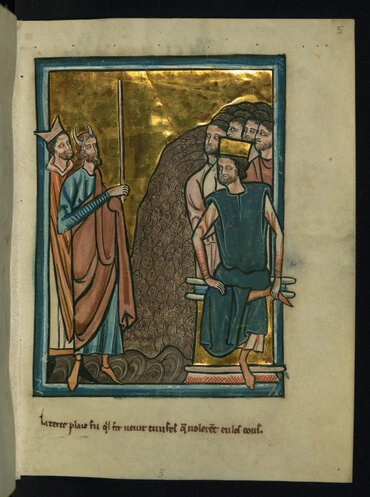Aaron was the brother of Moses. He symbolizes two things, at different stages of the story.
During the first part of the exodus, when he was Moses' spokesperson, Moses represents the Word as it truly is, as it is understood in heaven, while Aaron represents the Word in its external sense, as it is understood by people in the world. This is why Aaron talks for Moses, and the Lord says of him "he shall be as a mouth for you, and you shall be to him as God." (Exodus 4:16)
Later, after the Tabernacle was built and he was inaugurated as high priest (see Leviticus 8,9), Aaron represents the Lord as to the Divine Good, and Moses represents the Lord as to the Divine Truth.
In Exodus 28:1, Aaron signifies the conjunction of Divine Good with Divine Truth in the Divine Human of the Lord. (Arcana Coelestia 9806, 9936)
In Exodus 32:1, Aaron represents the external of the Word, of the church, and of worship, separate from the internal. (Arcana Coelestia 10397)
In Exodus 4:14, before he was initiated into the priesthood, Aaron represents the doctrine of good and truth. (Arcana Coelestia 6998)







